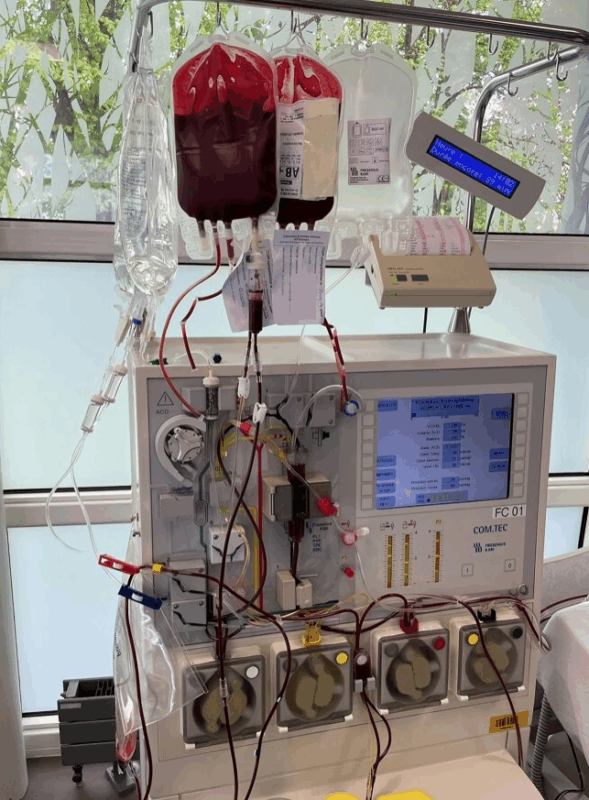
Maxime Dely – Simple Transfusion or Red Cell Exchange: Two Techniques, Two Philosophies of Care
Maxime Dely, Sales and Application Specialist in Therapeutic Apheresis and Cell Therapy, posted on LinkedIn:
”Simple transfusion or red cell exchange: two techniques, two philosophies of care.
When we think of a blood transfusion, we usually imagine a straightforward act – giving red blood cells to correct anemia or improve oxygenation.
But in certain cases – sickle cell disease, polycythemia vera, severe malaria, or intoxications – there’s another option: red cell exchange by apheresis.
Instead of adding more blood, we gradually replace the patient’s red cells with healthy donor cells using an apheresis machine.
The total blood volume remains constant, and the process is precise, controlled, and personalized for each patient.
The benefits are clear:
- Rapid correction of abnormal red cell proportions.
- No iron overload – a common issue with repeated transfusions.
- Improved blood viscosity, reducing vaso-occlusive risks.
- Above all, a tailored, patient-specific approach – precision transfusion medicine.
Of course, this technique requires specialized expertise, equipment, and teamwork. But it represents where medicine is heading: more targeted, safer, and more human.
Behind every red cell exchange stands a dedicated team – nurses, physicians, and biologists – turning advanced technology into meaningful care.”

Keep up with Hemostasis Today.
-
Dec 17, 2025, 15:24Laura Dormer on a Motor Relearning Program for Chronic Stroke Patients
-
Dec 17, 2025, 15:01WSO: United Nations Has Formally Adopted the Political Declaration on NCDs and Mental Health
-
Dec 17, 2025, 14:44Bryan Unger: 1st Patient Has Been Enrolled in NuvOx Therapeutics’ Phase IIb NOVEL Trial
-
Dec 17, 2025, 14:29Sarah Richardson: Feeling So Proud to Be a Part of the Advocacy Team for the HFA
-
Dec 17, 2025, 06:28Wolfgang Miesbach on Linus Völker’s Presentation of Caplacizumab as Frontline Therapy for iTTP
-
Dec 17, 2025, 06:11Lisa Murphy Thanks Stroke Foundation Team for An Impactful, Rewarding and Incredible Year
-
Dec 17, 2025, 06:05Emmanuel J Favaloro Shares A Study on AI and Machine Learning in Thrombosis and Hemostasis
-
Dec 17, 2025, 05:54Michael Bruckman: Fantastic to See Platelet-Inspired Nanoparticles Gaining Attention!
-
Dec 17, 2025, 04:00Peter Verhamme on Genetic Predisposition to Thromboembolism and COVID
